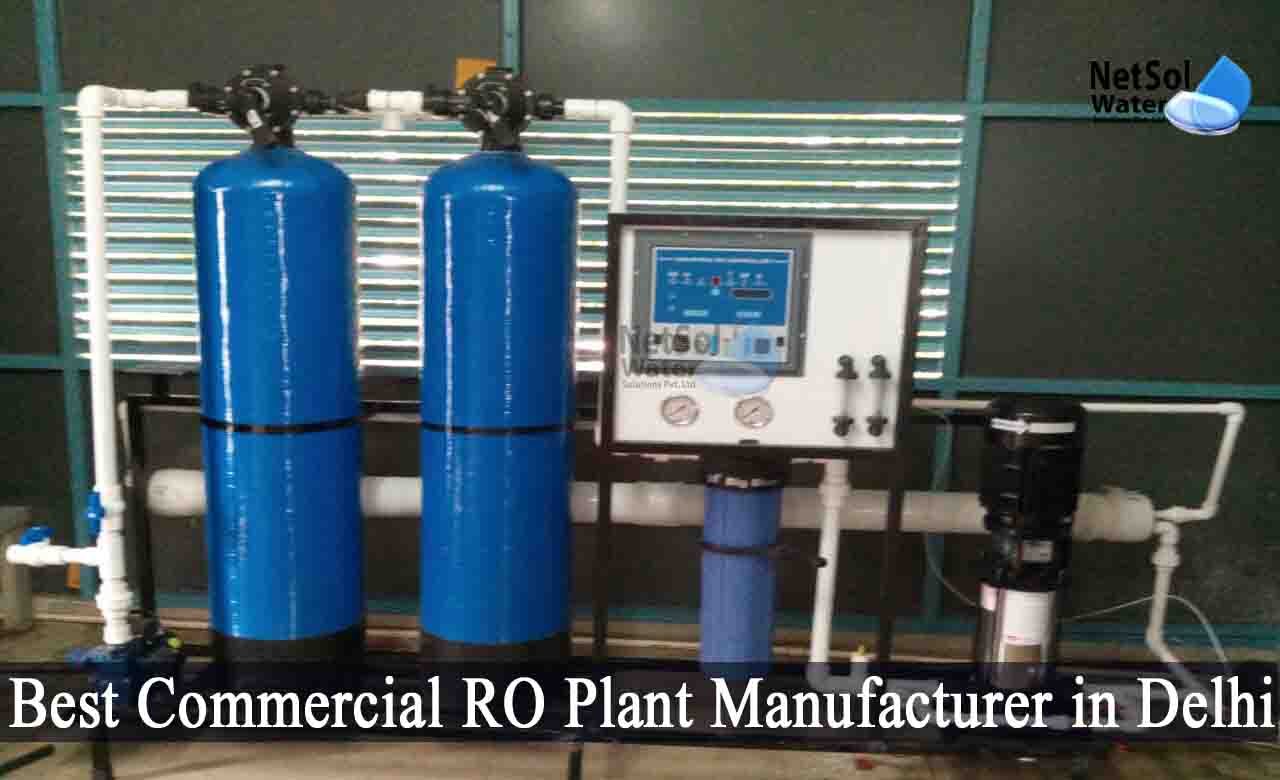Who is the Best Commercial RO Plant Manufacturer in Delhi?
According to an assessment by the Central Ground Water Board, Delhi's groundwater contains more than 22 million gallons of unwanted waste. After RO treatment, this water can be turned into drinking water. That is why; the Delhi government intends to supplement water supplies by establishing reverse osmosis (RO) water purification plants in locations where groundwater is unusable, as well as in communities that rely on water tankers and jhuggis.
What is the status of RO Plants in Delhi?
In Delhi, 5 RO plants with a total capacity of 363 million liters per day (MLD) will be built in the first phase of the project in a year. Small RO plants are also anticipated to sprout up in places that are now served by water tankers.One tiny RO plant is expected to come online for every 500 households. One RO plant will be built for every jhuggi, with more likely being built for locations with a population of more than 2,000.
Okhla (136 MLD), Dwarka (68 MLD),AnandVihar (68 MLD), Chilla (45 MLD), and Najafgarh would house the five RO plants. These locations were chosen because they have high groundwater levels yet are unsuitable owing to excessive salinity or total dissolved solids. The RO facilities would purify groundwater and distribute it to households via existing Delhi Jal Board (DJB) pipes.
Why are Commercial RO Plants required in Delhi?
Freshwater production issues have persisted throughout human history. Numerous issues, including location, pollutants, temperature, salinity, dissolved solids, and others, have delayed the provision of clean water in many areas. Fortunately, the development of reverse osmosis has offered an effective answer to this problem.
Our Commercial RO Plants work by removing dissolved ions from water using modern filtering technologies. Osmosis is an elemental force that attracts water with a greater salt content to water with lower salt content. This elemental force overcomes by applying pressure using pumps and semi-permeable membranes, which drives water across the membrane and filter out dissolved salts.
Our Commercial RO plants have the following advantages:
- Converts hard water into soft water;
- Removes potentially harmful pollutants and microorganisms;
- Good grade water for workers;
- Improves the flavour of water;
- Because of the best quality of the water, beverages & food taste better;
- Removes any hazardous elements from the water;
- Simple to use;
- Low operating costs;
- User-friendly system.
What are the fundamental elements of our Commercial RO Plants?
Our Reverse Osmosis System is made up of five fundamental components:
1) Membranes and Pressure Vessels
Essentially, a reverse osmosis system would be useless without membrane components. The proteins that comprise membrane components differ based on the kind of intake water and the final purity. To mention a few, membrane elements for brackish water, seawater, hospital-grade disinfection, and membranes engineered to remove particular toxins are available with us. If there is a requirement for water purification, there is almost definitely a membrane element for the task. The size and quantity of reverse osmosis membranes in a system are determined by the scale of the task, i.e., municipal, commercial, or industrial.
2) RO Skid
The best approach to make your reverse osmosis system as sturdy as possible is with a powder coated, carbon steel frame to place all of your components on. It's weatherproof, built to withstand the intense vibration of high-pressure pumps, and attaches to the ground.
3) Cartridge Filter
Most Commercial RO Plants include a cartridge filter to guarantee that no particles big enough to harm the membranes come into contact with them. This cartridge is typically a five-micron spun polypropylene filter; however, it can be customized upon request. The cartridge is housed in a tough shell that can withstand pressure from the main feed or booster pumps.
4) High Pressure Reverse Osmosis Pump
The rejection rate for a reverse osmosis system isn't practical in most commercial or industrial applications without a high-quality pump. It is critical for the system that the pump be properly matched to the membrane amount and size. The higher the horsepower, on the intake pump, the better the rejection and the recovery rates of permeate.
5) Control Panel
Lastly, our Commercial RO Plants are operated by a human operator. Depending on the complexity of the controls, Netsol Water employs modern PLCs or a solid-state microcontroller. The controls may also be utilized to manage several systems at the same time, resulting in a one-man water production factory.
A commercial reverse osmosis system can have a variety of different components placed onto or into it, as supplementary components as well. The entire skid, for example, may be incorporated into a containerized system, allowing your Commercial RO Plants to be mobile. A variety of additional skids can be linked for duties such as membrane cleaning, pre-treatment, chemical dosing, and a variety of other chores as needed.
Why must you constantly go along with Netsol Water?
Netsol's commercial and industrial professionals can handle your most difficult water treatment or design difficulties with innovative and cost-effective technologies. We collaborate with experienced engineers to submit sealed drawings for regulatory bodies, and we can even manage the permitting procedure for you. Our team has developed, built, and managed systems for a number of businesses. Not only can we give you with the equipment, but what sets us apart is our service. Our specialists are skilled in commercial RO Plants and can analyse, repair, and maintain your system promptly and efficiently. We understand that water is the lifeblood of your business, and we work hard to ensure that the products and services you deliver to consumers and clients are never interrupted.




